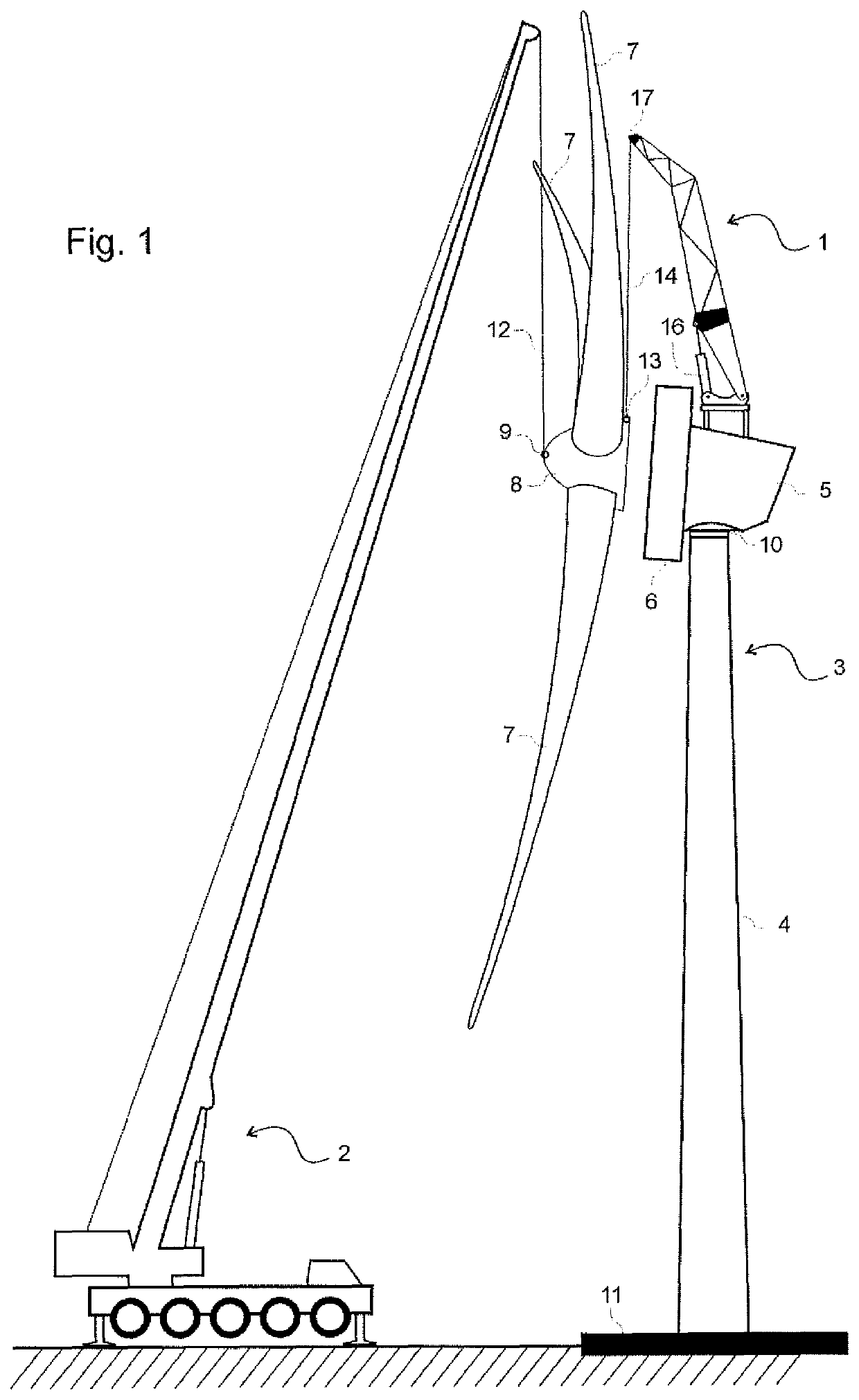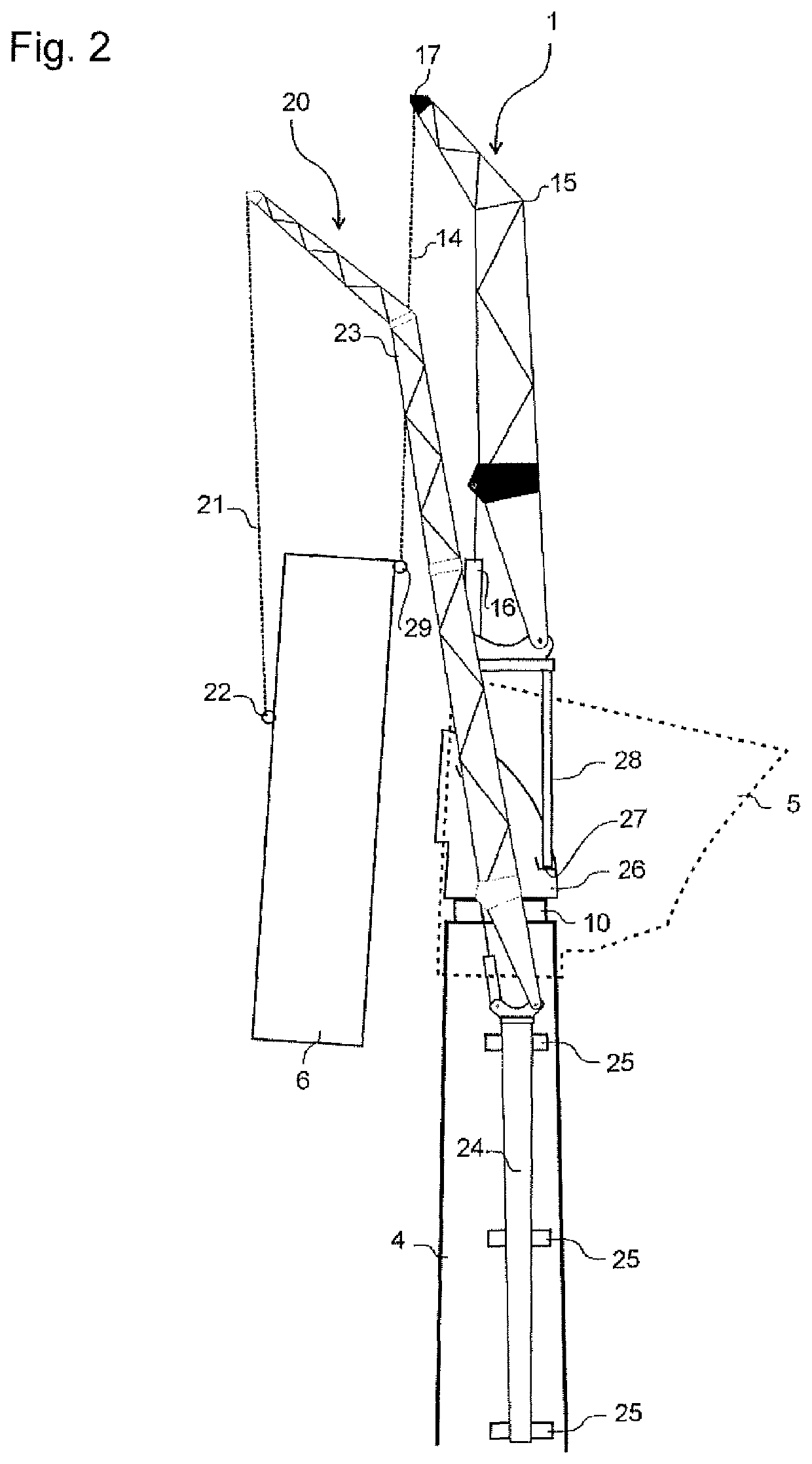Hoisting system for installing a wind turbine
- Summary
- Abstract
- Description
- Claims
- Application Information
AI Technical Summary
Benefits of technology
Problems solved by technology
Method used
Image
Examples
Embodiment Construction
[0034]FIG. 1 shows a hoisting system comprising a first hoisting device 1 and a second hoisting device 2 which is used for the installation of a wind turbine under construction 3. The wind turbine comprises a foundation 11, a tower 4 and a yaw bearing 10. The yawing part comprises a nacelle 5, a direct drive generator 6 and a rotor which comprises a hub 8 and one or more blades 7. The rotor may be the heaviest part. The first hoisting device is supported on the yawing part of the wind turbine and comprises a beam 15 and a hoisting cable 14 which is fixed to hoisting point 13 of the rotor. The second hoisting device comprises a hoisting cable 12 and is fixed to hoisting point 9 of the rotor. It further comprises actuator 16 which allows for an inter alia horizontal movement of the lifting point 17.
[0035]FIG. 2 shows another hoisting system comprising a first hoisting device 1 and a second hoisting device 20, which is used for the installation of a wind turbine under construction. The...
PUM
 Login to View More
Login to View More Abstract
Description
Claims
Application Information
 Login to View More
Login to View More - R&D
- Intellectual Property
- Life Sciences
- Materials
- Tech Scout
- Unparalleled Data Quality
- Higher Quality Content
- 60% Fewer Hallucinations
Browse by: Latest US Patents, China's latest patents, Technical Efficacy Thesaurus, Application Domain, Technology Topic, Popular Technical Reports.
© 2025 PatSnap. All rights reserved.Legal|Privacy policy|Modern Slavery Act Transparency Statement|Sitemap|About US| Contact US: help@patsnap.com



